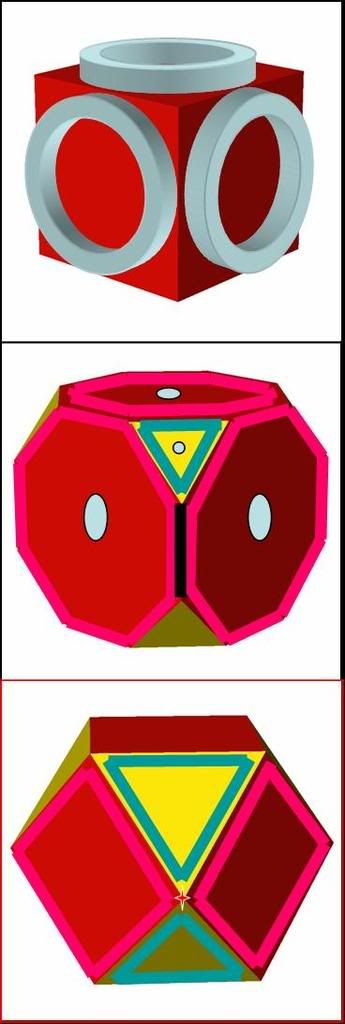Apparently not. It is the funny cusp that is at the vertex (of a true polyhedral MaGrid) and there should be NO line cusps. HOWEVER, because the vertex in WB6 and 7 doesn't really exist and is instead replaced by a quasi-edge, we get a quasi-line cusp. Make the quasi-edge more like a vertex (which I have been trying to do) and the quasi-line cusp becomes a funny cusp.tombo wrote: As I understand it.
There are 3 kinds of cusps in cubical 6 coil polywell.
Point cusp located in the center of each face.
Line cusp located at each vertex.
Funny cusp located in the center of each edge. (where the coils are closest)
Are we all on the same page here?
Again, not so. With a true Polywell, there is a field null at each vertex. The only machines so far to achieve that were the MPGs, but they had a hunka matter in the way. I am trying to "free the funny cusp"!tombo wrote:There are no field nulls except at the very center where the plasma lives.
Indrek never actually modeled a true Polywell. He modeled WB 6 (or 7) IIRC.tombo wrote: (If you think I am wrong show me exactly where and why. Last time I looked at Indrek's models there were none.)
Once again, not so. The cusps are where the field lines enter or leave the MaGrid. They can be the IN or OUT point cusps in the centers of the coils or virtual coils, they can be line cusps where the fields from two coils OF THE SAME POLARITY meet and squeeze out (or in) between them, or they can be the "Funny"cusps where there are both IN and OUT fields trying to squeeze past each other.tombo wrote:The cusps are where the field lines are straight. (strong but straight)Actually more to the point (I think) where they are diverging.
Not getting this. "the center of 2 adjacent corners of the cube, the center of the edge connecting them" are the identical point, no? You have described two points which does not a plane make. What am I missing?tombo wrote:Consider the plane surface defined by the center of 2 adjacent corners of the cube, the center of the edge connecting them and the center of the cube.
Again, ???tombo wrote:Now there is a set of (diverging) field lines on that surface. They are straight and they lie in a plane. (Due to symmetry)
Presuming an ion is headed toward a cusp from the center of the machine, if the ion has enough velocity to climb the potential well past the edge, then you are right, the hit the wall. But they usually don't have that much velocity. Any electron similarly headed exits the MaGrid, gets restrained by its potential, and returns thru the same hole or travels around to another one. Again, if it has too much velocity, it too will reach the wall, but it started at the same potential so there is very little loss there.tombo wrote: Any electron (or ion) moving in that plane follows a field line to the wall.
Ok. I disagree.tombo wrote: I contend that this whole surface (and beyond) is a cusp that includes the funny cusp which is just a portion in the center of it and both line cusps at the cube corners.
In fact all the line cusps and funny cusps are part of one connected cusp system.
I will steal a recent graphic and try to describe the situation as I understand it.

